Blogging Alex Raymond’s Flash Gordon, Part Eighteen – “Jungles of Mongo”
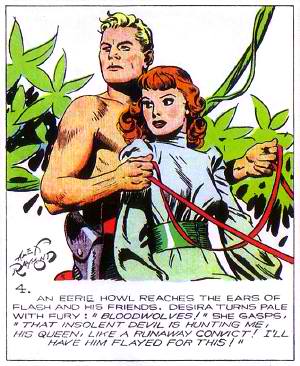
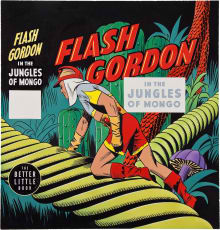 “Jungles of Mongo” was the eighteenth installment of Alex Raymond’s Flash Gordon Sunday comic strip serial for King Features Syndicate. Originally published between June 21 and November 1, 1942, “Jungles of Mongo” picks up where the preceding installment, “Queen Desira” left off with the seductive Queen and a bare-chested Flash riding the local steed, a gryph through the lush jungles of Tropica with Dr. Zarkov and Dale Arden bringing up the rear. Prince Brazor, who has usurped the throne of Tropica from Desira, releases a pack of bloodwolves to hunt them down.
“Jungles of Mongo” was the eighteenth installment of Alex Raymond’s Flash Gordon Sunday comic strip serial for King Features Syndicate. Originally published between June 21 and November 1, 1942, “Jungles of Mongo” picks up where the preceding installment, “Queen Desira” left off with the seductive Queen and a bare-chested Flash riding the local steed, a gryph through the lush jungles of Tropica with Dr. Zarkov and Dale Arden bringing up the rear. Prince Brazor, who has usurped the throne of Tropica from Desira, releases a pack of bloodwolves to hunt them down.
Alex Raymond captures the beauty of Tropica’s flora and fauna with the same care and attention to detail that he demonstrated in some of his earliest Mongo strips. Flash fells a great tree so that the fugitives can travel down the river and, in a move that is now unthinkable, our hero deliberately sets fire to the forest to aid in their escape from Brazor and his bloodwolves. Of course, the cliffhanger nature of the serial demands constant peril and the fugitives quickly find themselves facing the Whirlpool Falls. Zarkov and Dale survive the falls, but Desira (whose top is provocatively torn going over the falls) is sucked into the whirlpool with Flash apparently sharing her fate in his attempt to rescue her.
Flash and Desira are carried by an underwater current into a cavern beneath the river. Flash climbs astride the prostrate form of Desira to perform artificial respiration to revive her when they are attacked by a giant cavernosaur, a cross between a seal and a plesiosaur. Flash kills the creature after a dramatic struggle. Don Moore’s script and Alex Raymond’s art wring every last bit of sexual tension out of the final panel with a trembling Desira in her torn clothes nestled against Flash’s heaving bare chest after his exertions against the carnivorous mammal. Moore notes that Desira ceases to be a Queen at that moment and is only a woman as she pleads with Flash to hold her.

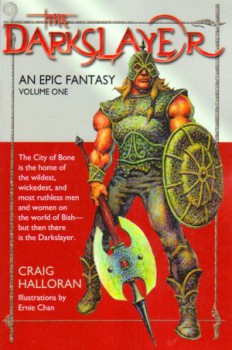 The Darkslayer: An Epic Fantasy, Volume One
The Darkslayer: An Epic Fantasy, Volume One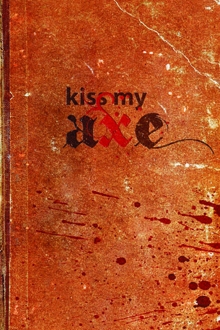
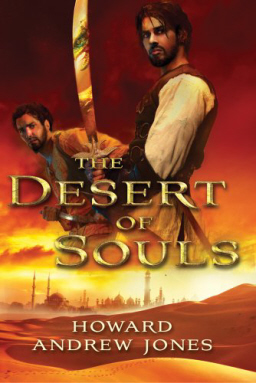
 In my never-ending quest to bring heroic fiction and sword-and-sorcery to a wider audience, I have been writing essays for National Public Radio. Last May they carried an article I drafted about
In my never-ending quest to bring heroic fiction and sword-and-sorcery to a wider audience, I have been writing essays for National Public Radio. Last May they carried an article I drafted about 
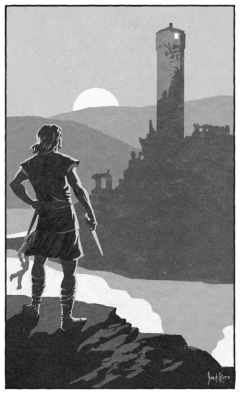
 Don’t you love it when alliteration works out like that? I do.
Don’t you love it when alliteration works out like that? I do.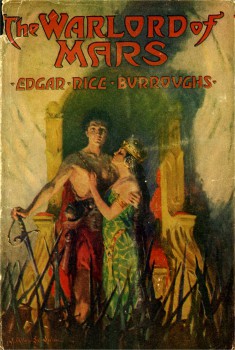 Although there are still eight more books to go in the Mars series, with The Warlord of Mars I can bring to a conclusion Phase #1 of the saga: this completes the “John Carter Trilogy,” and the books that follow it take different paths with new heroes. John Carter will not return to the protagonist role until the eighth book,
Although there are still eight more books to go in the Mars series, with The Warlord of Mars I can bring to a conclusion Phase #1 of the saga: this completes the “John Carter Trilogy,” and the books that follow it take different paths with new heroes. John Carter will not return to the protagonist role until the eighth book,